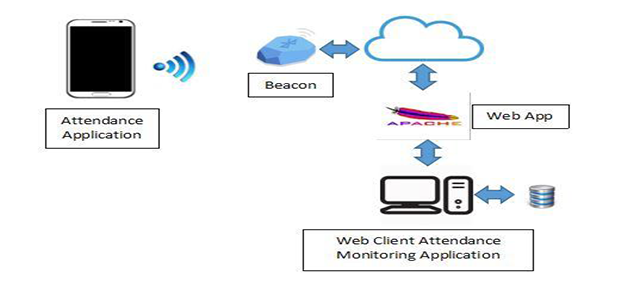


Indian Journal of Science and Technology
DOI: 10.17485/IJST/v13i40.1527
Year: 2020, Volume: 13, Issue: 40, Pages: 4234-4243
Original Article
Anna Fay E Naive1∗, Paul Joseph M Estrera1 , Archie O Pachica1
1 Instructor, Department of Information Technology, University of Science and Technology of Southern Philippines, C.M Recto Ave., Lapasan, Cagayan de Oro City, 9000, Philippines.
∗ Corresponding author:
Tel: 09551252473
[email protected]
Received Date:21 August 2020, Accepted Date:18 October 2020, Published Date:20 November 2020
Objectives: To create a hardware and software tool that can be used for monitoring the faculty attendance and to generate customized reports. Methods/Statistical Analysis: The Bluetooth Low Level Energy (BLE) beacons would be set as stationary device that has proximity unique identifier. Once the smartphone of the faculty is within the range of the beacon, it can then record the faculty’s attendance. Calibrated beacon range makes the proposed design unique in terms of addressing common attendance tracking issues. Also, an automated attendance monitoring tailored based on the periodic report the Human Resource (HR) of the university. The researchers conducted a testing in the laboratory classrooms to check the functionality and reliability of the automated attendance monitoring. Findings: Based on the testing conducted, the system is capable to detect the faculty once he/she is inside the classroom, records his/her attendance and generates reports. The mean percentage error is 8.02% which means that the BLE beacon is acceptable in detecting the faculty’s smartphone prior entering to his/her class.
Keywords: Faculty class attendance monitoring system; Bluetooth low level energy beacons
© 2020 Naive et al. This is an open access article distributed under the terms of the Creative Commons Attribution License, which permits unrestricted use, distribution, and reproduction in any medium, provided the original author and source are credited. Published By Indian Society for Education and Environment (iSee).
Subscribe now for latest articles and news.